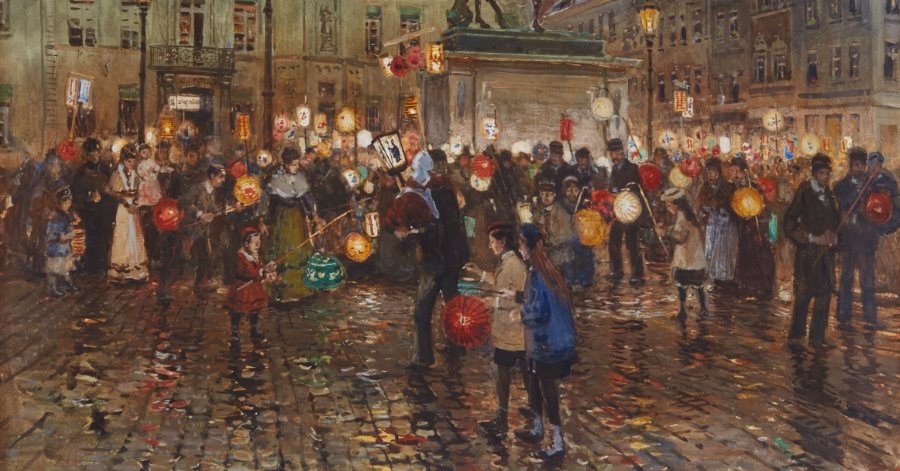
In case you haven't noticed, Germans love to party and will find whatever reason they can to have another little Fest or celebration. A Guy cutting up his coat?! Sounds like a reason for celebration! No really, let me introduce you to Saint Martin’s day:
St. Martin’s day originated in France and then spread all through Middle and Eastern Europe.
Originally only a Catholic holiday, St Martin’s Day was named after Martin of Tours, a Roman soldier who later became the third Bishop of Tours. He was known for sharing his winter coat with a poor beggar that was out in the freezing cold, so Martin took his sword and cut his coat in half, handing the other half to the cold man. St. Martin was known for being a kind hearted, and he cared for children and the poor.
Today St. Martin’s day celebrations are held all over Germany, by lighting Bonfires and holding lantern parades, even in the Protestant areas of Germany.
If you have children that are enrolled in a German preschool or Kindergarten expect to be spending the evening out in the cold. The children spend weeks crafting colorful paper lanterns and practicing the lantern songs.
Everyone will meet up once it’s dark, and the parade will ensue, usually following a man ontop of a horse, dressed as St Martin. The children will hold the lanterns out in front of them, and sing the songs they practiced.
Of course, no Lantern procession is complete without at least a few of the lanterns going up in flames, as the parent fanatically tries to stomp out the fire as the child cries about their destroyed creation. Although the lanterns are usually held at the end of a stick, if you want to be on the safe side you may want to invest in a battery run lantern pole.
At the end of the procession everyone gathers at a big bonfire and eats pretzels or little Martins men made out of sweetbread.
Another big tradition of St. Martins Day is about food, a holiday with an associated meal? Who would have guessed…
The menu of the day consists of goose, often stuffed with chestnuts, potato dumplings and red cabbage. Goose is said to be served, because a flock of Geese tattled on good ‘old Martin.
Apparently St. Martin was not too keen about being appointed Bishop, so when it was time for him to step up, he ran and hid in a stable with a bunch of geese.
Well, it was not one of his brightest moments, because those geese gave him up in no time.
Since St. Martins day falls right into the end of harvest and the beginning of winter, it is said that the feast was the last one before the Catholic Advent Fast that would last until Christmas Eve.
But if you aren't really into all this, with the Lanterns and deliciously greasy food, you're in luck, because the 11th of November also happens to mark the start of Germany’s fifth season and the beginning of carnival.
Fasching, or carnival, starts on November 11th at 11:11 am and will last all the way untill the end of February or beginning of March—were you'll see the big Fasching Parades.
Either way, we hope you enjoy your St. Martin’s Day!
Happy Holidays.
